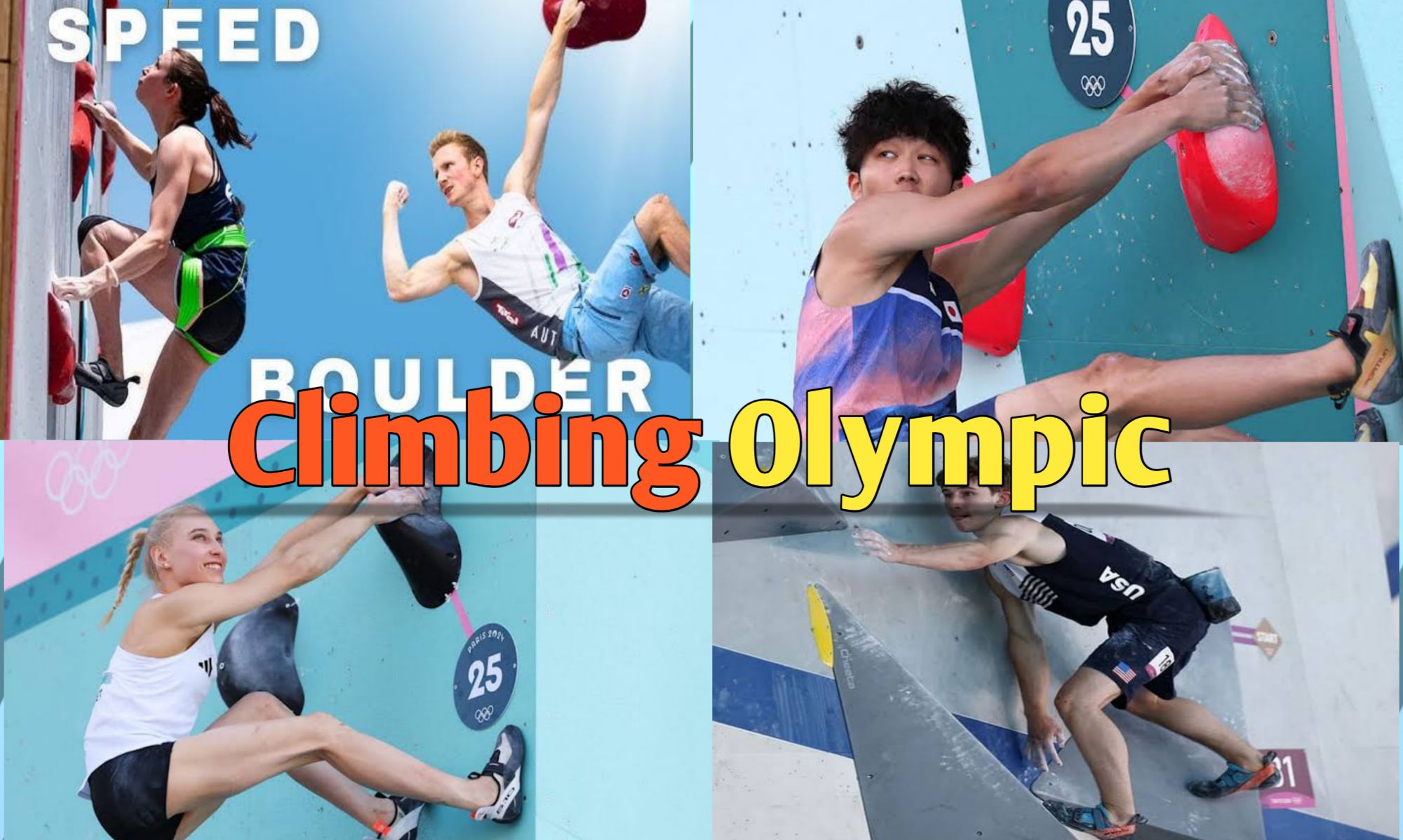The addition of climbing in the Olympics represents an amazing shift in the geography of competitive sports. For ages, climbing has been a pursuit of particular challenge and adventure, but its recent Olympic debut has projected it into the global limelight, reforming comprehensions and expanding its followership.
The Genesis of Olympic Climbing
Now Climbing made its Olympic debut at the Tokyo 2020 Games, officially held in 2021 due to the COVID- 19 epidemic. This marked a major moment for the sport, integrating it into the pantheon of Olympic disciplines. The decision to include climbing was a strategic move by the International Olympic Committee(IOC) to attract youngish cult and diversify the sports presented in the Games.
The Sport’s elaboration
Climbing, in its colorful forms, has evolved significantly over the once many decades. Traditionally, climbing was divided into orders like bouldering, lead climbing, and speed climbing. Each of these disciplines requires a unique set of chops, from the fashion and strength demanded for bouldering to the dexterity and speed demanded by speed climbing.
The Tokyo 2020 Games introduced a combined format, featuring all three disciplines in a single competition. This format aimed to show the rovers’ versatility and overall prowess, though it also presented a challenge in terms of balancing the different skill sets needed for each discipline.

The Olympic Format
In the combined format, athletes contended in all three disciplines — bouldering, lead climbing, and speed climbing with their scores added up to determine their final standing. This format needed challengers to exceed across different climbing ways, a true test of their comprehensive climbing capacities.
1. Bouldering: This discipline involves climbing short, but grueling routes without ropes, generally on walls up to 20 bases high. The emphasis is on problem- working and fashion.
2. Lead Climbing: Athletes climb advanced walls while trimming their rope in Topre-placed anchors. The thing is to reach the loftiest point on the route or finish it in the shortest time.
3. Speed Climbing: This is a race against the timepiece on a standardized wall. Challengers climb the same route, and the fastest rambler triumphs.
Impact and event
The addition of climbing to the Olympic canon has had a profound impact on the sport. It has brought climbing to a broader followership, including those who might not have else engaged with the sport. This visibility is not only salutary for the athletes but also for the climbing community as a whole, potentially leading to increased interest and participation at the grassroots position.
Athletes like Janja Garnbret, who won gold in the women’s competition, and Adam Ondra, a famed rambler from the Czech Republic, have gained transnational fame and come ministers for the sport. Their performances have inspired a new generation of rovers and have stressed the different skill set needed for competitive climbing.
Looking Ahead
As the climbing community looks towards unborn Olympic Games, there’s ongoing discussion about the format and the implicit elaboration of the sport’s donation. While the combined format was a new approach, there’s debate about whether separating the disciplines might more showcase individual chops.
The addition of climbing in the Olympics has set a precedent for how adventure sports can be integrated into the Olympic frame. It represents a broader trend of includingnon-traditional sports, reflecting the evolving nature of the Games and its alignment with contemporary interests.
Q&A
Q1 When did climbing first appear in the Olympics?
Ans: Climbing made its Olympic debut at the Tokyo 2020 Games, which were held in 2021 due to the COVID- 19 epidemic.
Q2. What climbing disciplines are featured in the Olympics?
A2 The Olympic climbing event features three disciplines bouldering, lead climbing, and speed climbing. Each discipline tests different aspects of climbing chops.
Q3. How does the combined format work?
A3 At Tokyo 2020, rovers contended in all three disciplines — bouldering, lead climbing, and speed climbing. Their performance in each discipline was combined to produce a total score, which determined their final ranking.
Q4. What’s bouldering?
Ans: Bouldering is a climbing short, but its grueling routes on walls up to 20 bases high and no the use of ropes. The focus is on fashion, strength, and problem- working chops.
Q5. What’s supereminent climbing?
Ans: Lead climbing is a discipline where athletes climb a high wall while securing themselves with a rope that’s cropped in Topre-placed anchors. The end is to either reach the loftiest point or complete the route in the shortest possible time.
Q6. What’s speed climbing?
Ans: Speed climbing is high stakes sprint up an invariant wall, where athletes race against the timepiece to reach the top in record time. Challengers climb the same route, and the rambler who reaches the top in the shortest quantum of time triumphs.
Q7. Who were some name rovers at the Tokyo 2020 Games?
Ans: Janja Garnbret of Slovenia won gold in the women’s competition, while Adam Ondra from the Czech Republic is a prominent figure in the climbing world, although he didn’t order in Tokyo. Both athletes are celebrated for their skill and donation to the sport.
Q8. What impact has Olympic addition had on climbing?
Ans: The addition of climbing in the Olympics has increased the sport’s visibility and fashion ability, drawing attention from a global followership and potentially inspiring new rovers. It has also handed athletes with lesser recognition and openings.
Q9. Are there any changes anticipated for unborn Olympic climbing events?
Ans: There’s ongoing debate about the format for unborn Olympic climbing events. Some suggest separating the disciplines to more punctuate individual chops, rather than using a combined format. Changes will depend on feedback from athletes, officers, and the climbing community.
Conclusion
climbing’s Olympic trip has been a thrilling ascent, marked by both challenges and triumphs. As the sport continues to grow and evolve, it’s poised to leave a continuing impact on the Olympic movement, inspiring unborn generations to reach new heights in their own climbing hobbies.
Know abou jaffrey vandersay

